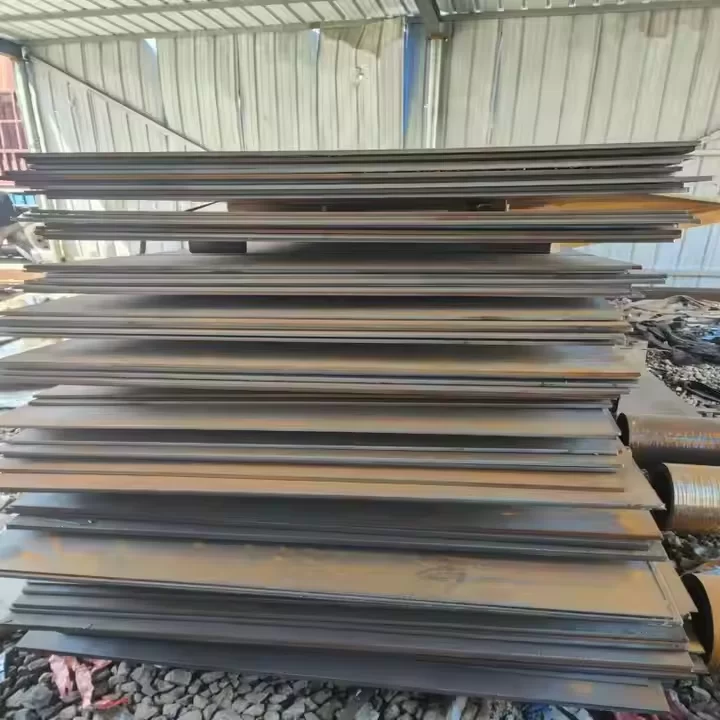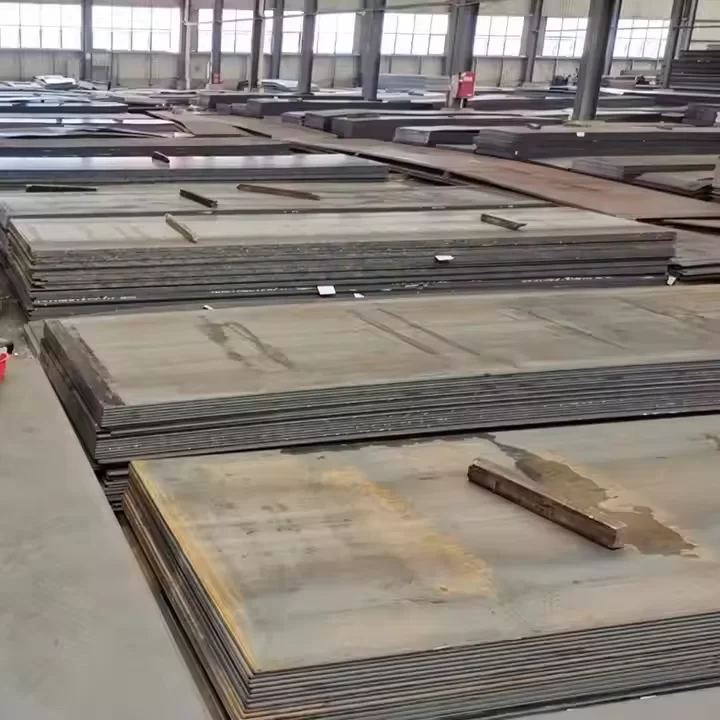A Field Note on AH36: Real-World Mechanical Properties That Shipbuilders Care About
If you work around docks, yards, or offshore fabrication shops, you hear one phrase constantly: ah36 steel mechanical properties. It’s the workhorse spec for high-strength ship plate—strong, weldable, tough at low temperature. And yes, there are nuances the datasheets rarely tell you. Let’s unpack them, with a few industry tidbits along the way.

What AH36 Means in Practice
Under ASTM A131/ABS rules, AH36 is a normalized or TMCP high-strength structural steel for hulls. Typical deliverables include mill certs to ABS/DNV/LR/BV/KR/CCS. In the shop, folks care about consistent yield strength and Charpy toughness—because out at sea, brittle fractures don’t play nice.
Typical Mechanical Property Window
| Parameter | Spec / Typical | Notes |
|---|---|---|
| Yield strength (Re) | ≥ 355 MPa (≤50 mm); ≈ 335–355 MPa (thicker) | Thickness effect applies |
| Tensile strength (Rm) | 490–620 MPa | Per ASTM A131/ABS |
| Elongation (A) | ≥ 21% (gauge-dependent) | Real-world use may vary |
| Charpy V-notch | ≥ 34 J @ -20°C (typical ABS AH36) | Test to ASTM E23/ISO 148-1 |
| Hardness | ≈ 170–220 HB | Informational; not a governing clause |
In fabrication, weldability is solid thanks to moderate CE values—TMCP plates usually behave nicer in the heat-affected zone. Many customers say the fit-up is predictable, which, to be honest, makes foremen sleep better.

Process Flow and QA (The Practical Bits)
- Steelmaking: BOF/EAF → ladle refining → continuous casting (cleanliness control).
- Rolling: hot rolling with controlled cooling; normalization or TMCP for toughness.
- Heat treatment: as required by order thickness and class rules.
- Testing: tensile (ASTM A370), CVN (ASTM E23/ISO 148-1), UT per ASTM A578/EN 10160, dimensional tolerances ±1%.
- Certifications: ABS, DNV, LR, BV, KR, CCS; mill ISO 9001 and traceability.
Service life? For hull structures, around 25–30 years with proper coating and maintenance. Corrosion allowances and paint systems matter as much as the steel grade—something we forget until dry-dock season.
Applications and Trends
Use cases: main hull, side shell, deck plating, hatch coamings, and offshore modules. Lately, I’m seeing more TMCP AH36 for weight savings and lower preheat needs. Also, buyers ask about EPD/green steel data—traceable carbon footprints are becoming part of the tender, surprisingly fast.

Quick Case Study
A SE Asia yard switched to TMCP AH36 on a 12k DWT coastal tanker. Weld travel speed rose ≈ 8%, preheat reduced in several joints, and UT rejects dropped week over week. Not magic—just consistent plates and sensible WPS.
Product Snapshot: Hot Rolled Ship Plate AH36/DH36
| Product | Hot Rolled Ship Plate Shipbuilding Steel AH32/DH32 AH36/DH36 |
| Origin | ROOM 1616, SHOUJING E-WORLD, XINDU DISTRICT, XINGTAI, CHINA |
| Dimensions | Width 1500/2000/2500 mm; Length 6000/10000/12000 mm |
| Processing | Bending, welding, decoiling, cutting, punching |
| Standards | AiSi, ASTM, DIN, GB (ships: ASTM A131/ABS class) |
| MOQ / Lead | 1 Ton / ≈ 7 days |
| Tolerance | ±1% |
Vendor Snapshot (What Buyers Compare)
| Vendor | Grades | Certs | Lead time | Customization |
|---|---|---|---|---|
| Baidy Steel | AH32–DH36 | ABS/DNV/LR/BV/KR/CCS | ≈ 7 days | Cut-to-length, beveling, blasting |
| Global Mill A | AH36–EH40 | ABS/DNV | 3–4 weeks | TMCP focus; tight flatness |
| Service Center B | A–AH36 | Regional class | Stock-based | Kitting, nesting, JIT |

Buying Tips and Final Notes
- Ask for CVN test location/transverse vs. longitudinal—it impacts ah36 steel mechanical properties acceptance.
- Confirm UT level and flatness class for panel line efficiency.
- For colder service, consider TMCP AH36 or uplift to DH/EH grades.
It seems that consistent mill practice beats paper specs. When in doubt, request heat-by-heat test summaries. That’s where the true ah36 steel mechanical properties story lives.
Authoritative References
- ASTM A131/A131M – Standard Specification for Structural Steel for Ships.
- ABS Rules for Materials and Welding, Part 2 – Steel Plates (AH36 requirements).
- ISO 148-1 / ASTM E23 – Charpy V-Notch Impact Testing Methods; ASTM A370 – Mechanical Testing of Steel Products.
- DNV Rules for Classification: Ships, Pt.2 Materials and welding – Hull structural steels.
Steel Galvanized Automotive Manufacturer We are a foreign trade enterprise specializing in steel export, and Plate Corten Sheet Metal Manufacturer have been deeply engaged in the industry for 18 years, accumulating rich experience and abundant resources. Steel Galvanized Automotive Plate Corten We have a professional team composed of industry elites, who are not only proficient in all kinds of knowledge of steel and familiar with the rules of international trade, but also have keen market insight and excellent communication skills. Whether steel specifications, quality standards, or trade policies and market demand in different countries and regions,Sheet Metal Manufacturer our team can accurately grasp them and provide customers with all-round, one-stop professional services.Xingtai Baidy Steel Works